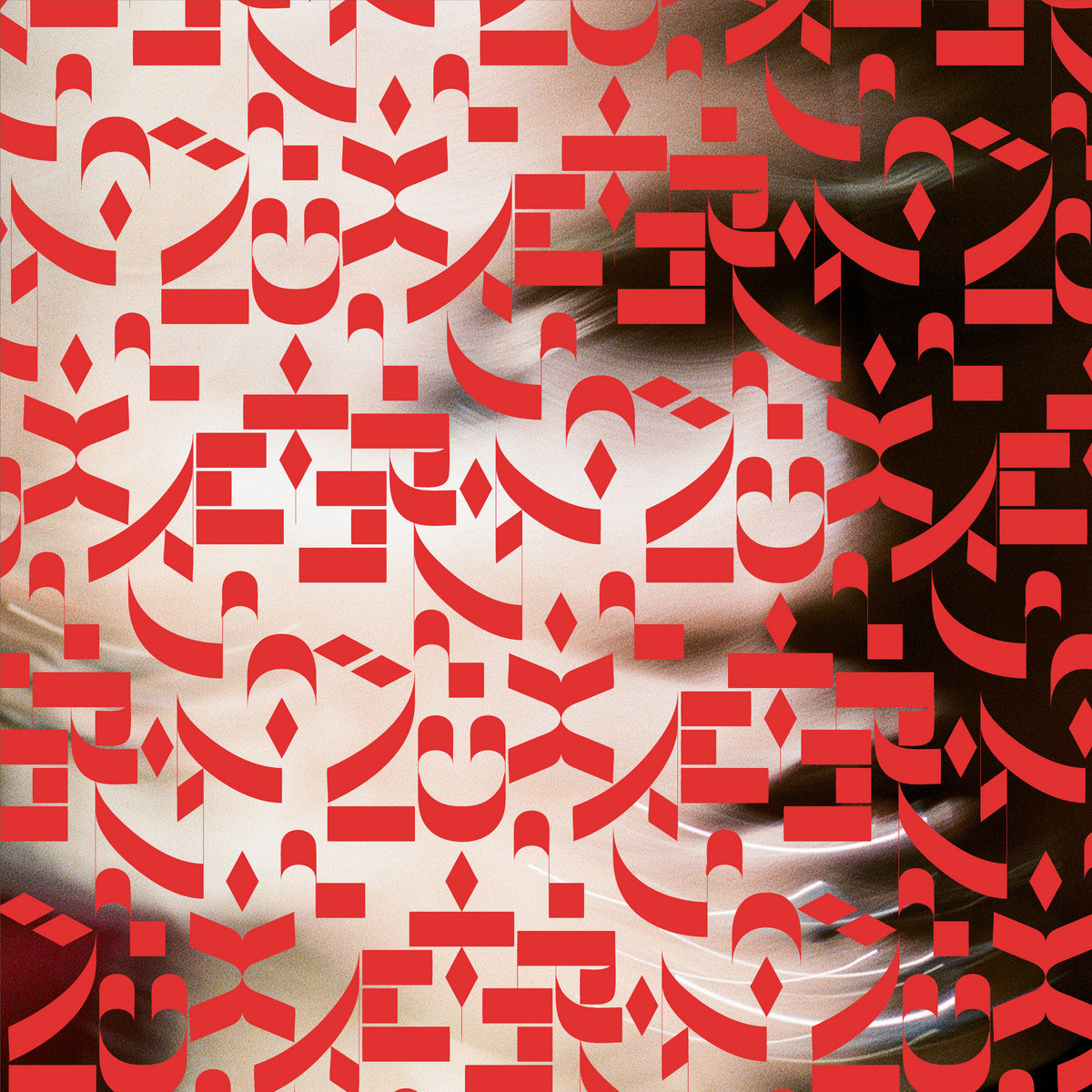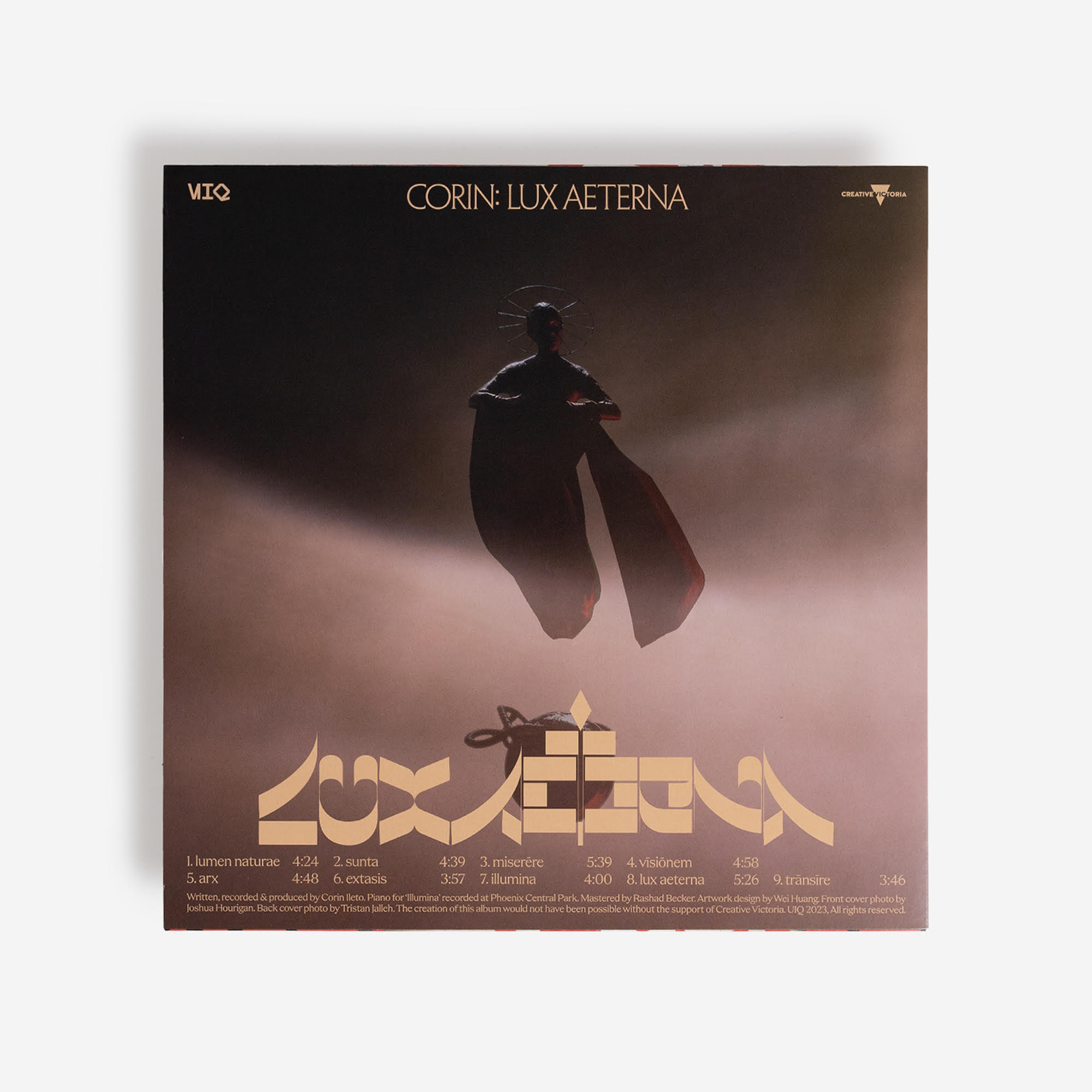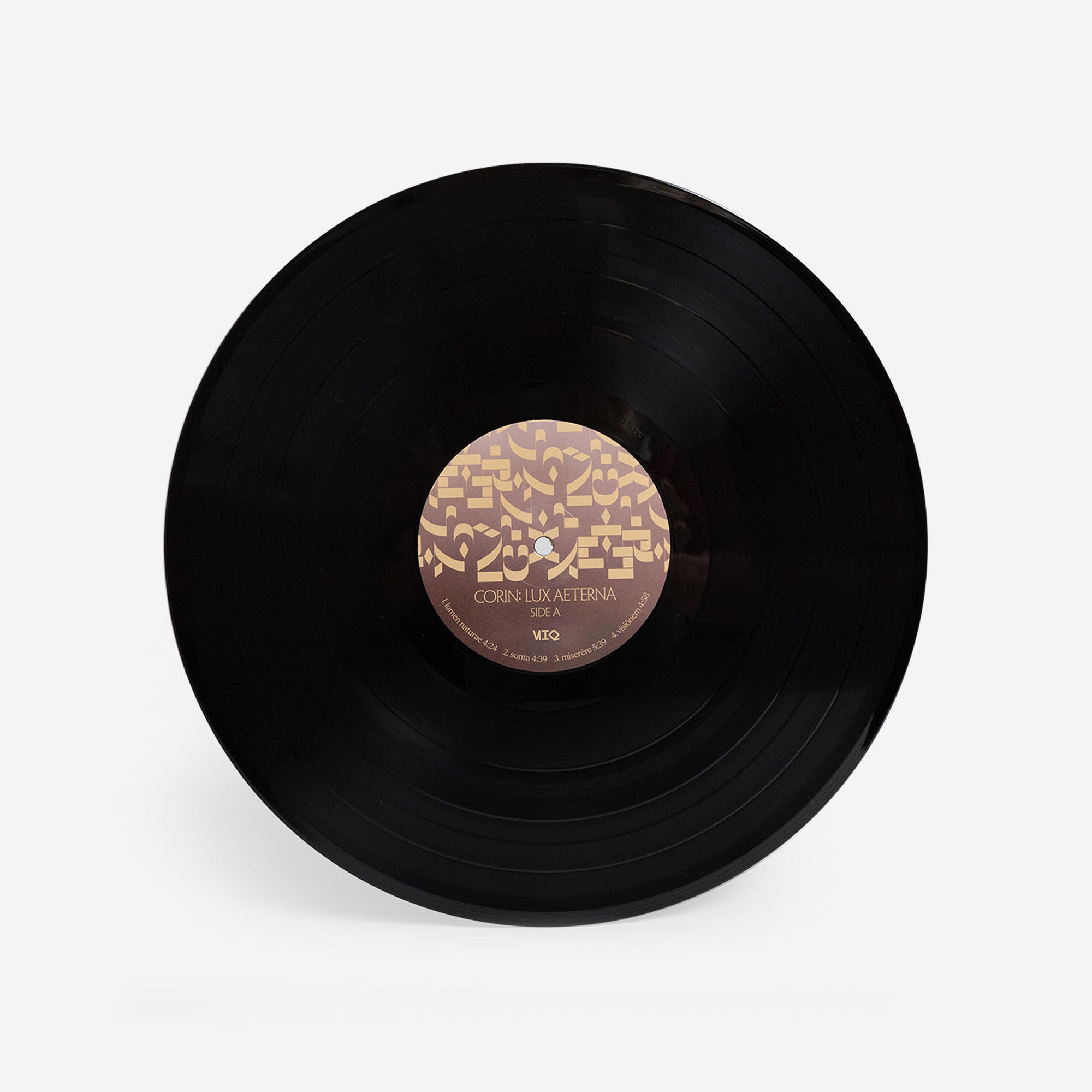UIQLP006
1 — lumen naturae
2 — sunta
3 — miserēre
4 — vīsiōnem
5 — arx
6 — extasis
7 — illumina
8 — lux aeterna
9 — trānsīre
Out 14/07/2023
LP, DL
Written, recorded & produced by Corin Ileto
Mastered by Rashad Becker
Piano for ‘Illumina’ recorded at Phoenix Central Park
Artwork design and typography by Wei Huang
Front cover photo by Joshua Hourigan
Back cover photo by Tristan Jalleh

On her sophomore album ‘Lux Aeterna’, Ileto explores the idea of sound as a sentient being. Meaning ‘eternal light’ (latin), the title is named after a choral work by György Ligeti (20th century composer) which appears in the movie 2001:Space Odyssey during monolith’s discovery on the moon. Ileto is inspired by Ligeti’s use of micropolyphony – a tool whereby clusters of sound slowly merge creating amorphous cloud-like formations. Using granular synthesis, samples are warped beyond obscurity into alien-like textures that bend and mutate, clusters of string and vocal harmonies detuning and reemerging into swarms. Coming from a background in theatre and sound design, Ileto explores the illusion of sound as gravitational – levitating and disintegrating into a void, or perhaps floating into eternity.
Ileto’s deep appreciation of science fiction soundtracks is most felt on ‘Lux Aeterna’. Like a celestial opera, ecstatic trance is reimagined within the context of sacred liturgy – merging hyper-real soundscapes with gregorian chant and medieval instrumentation. Ileto moves in between moments of bold expansiveness and deep vulnerability and alienation. The warped percussion of ‘Sunta’ rumbles along like a pseudo-archaic codified ritual punctuated by the chanting of an alien language. At its peak, ‘Vīsiōnem’ and ‘Extasis’ bring us into club territory, ecstatic industrial trance. On the extreme – Miserēre sounds like a broken lullaby, a sighing choir of malfunctioning androids. Ileto draws on her classical background in Illumina, weaving together metallic textures with sorrowful delicate piano improvisations.
Supported by Creative Victoria and the Australia Council for the Arts
In the accompanying visuals created by Tristan Jalleh – apparitions of android machinations, swirling sentinels, debris suspended in space, momentarily forming then collapsing again into an abyss. For the artwork, Wei Huang uses neumes (early notation), reconfiguring the glyphs to create an archaic looking code.

